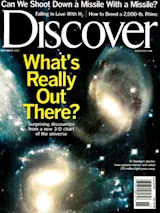In the bestiary of desire, the rhinoceros is more of a sex object than its glowering visage and hunker-down physique would suggest. In some parts of Asia, powdered rhino horn is regarded as both panacea and aphrodisiac. Long association of the rhino with sexual potency has even filtered into our popular culture, spawning such herbal sexual tonics as Wild Rhino, Rhino Sex Enhancement Tablets, and Rhino Cola.
On September 13, Emi, shown some 14 months pregnant in July (above), delivered a healthy, 73-pound male calf at the Cincinnati Zoo. He is the first Sumatran rhino born in captivity in over a century—the last was born at the Calcutta Zoo in 1889. The calf's arrival is even more exciting because Emi had miscarried several times in the first three months of pregnancy.
But life as a sex symbol has done little for the actual love life of the average rhino, particularly ...














